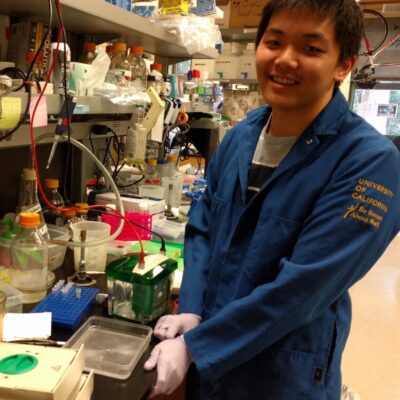Brian Woo L&S Sciences
Roles of Unc93B1 in TLR9 regulation beyond trafficking
The Toll-like receptor (TLR) family is a key component of the host innate immune response to foreign microbes. In the cell, TLRs localized to endolysosomes (termed intracellular TLRs) recognize microbial nucleic acids, and recognition of these microbial products then invokes an immune response to a myriad of bacterial and viral pathogens. One regulator of intracellular TLR activity that my project aims to characterize is Unc93B1, a chaperone protein that is currently understood to traffic intracellular TLRs to their correct endolysosomal compartments. This summer, my goal is to elucidate the role Unc93B1 plays in regards to regulating recognition of DNA ligands by one of these intracellular TLRs, TLR9, and to characterize its molecular mechanism. Current data from the Barton lab suggest that Unc93B1 stays associated with TLR9 in the endolysosome and that a specific configuration of Unc93B1-TLR9 is necessary for TLR9 signaling; disruption of this configuration leads to abolished signaling and improper association between Unc93B1 and TLR9. By carrying out co-immunoprecipitation experiments with TLR9 and various Unc93B1 mutants, I will work to better understand which amino acid resides of TLR9 and Unc93B1 associate and mediate TLR9 signaling activity, and how signaling activity is directly affected by altered Unc93B1-TLR9 association.
Message To Sponsor
Hi Pergo Fund, The opportunity to carry out funded research in the context of such a large cohort of fellows was a very humbling and valuable experience. Over the summer, I refined my ability to logically reason through invalid interpretations of data and determine the correct "next steps" when confronted with confusing data; this is so relevant because research is the key to understanding life. The SURF experience only solidified my conviction to pursue further schooling in graduate school. I also became more confident in my ability to conceive of and carry out experiments. Thank you so much for your support! Brian